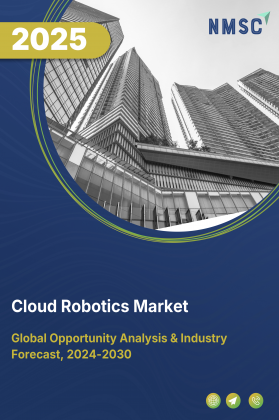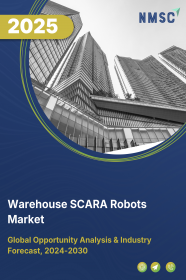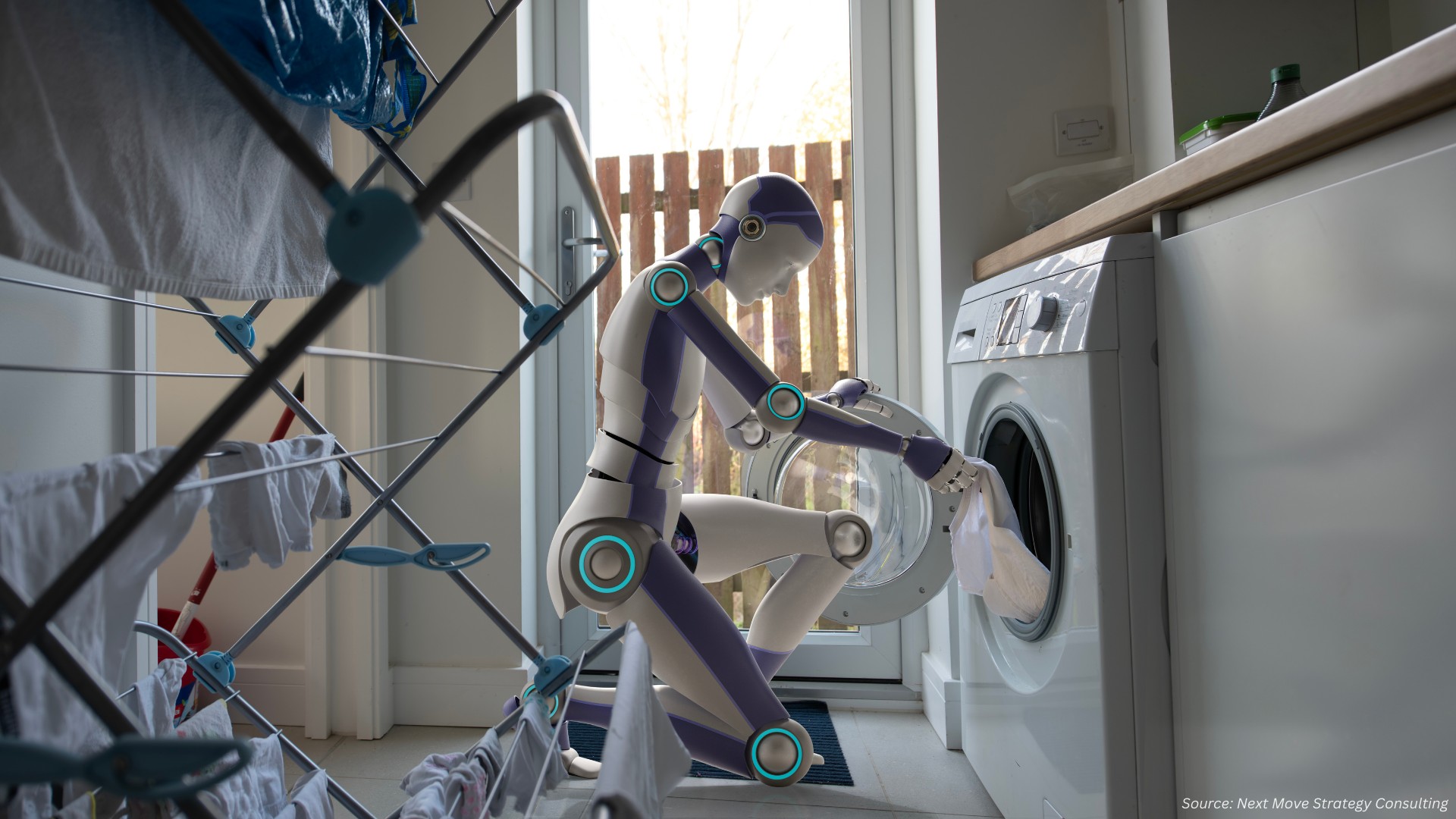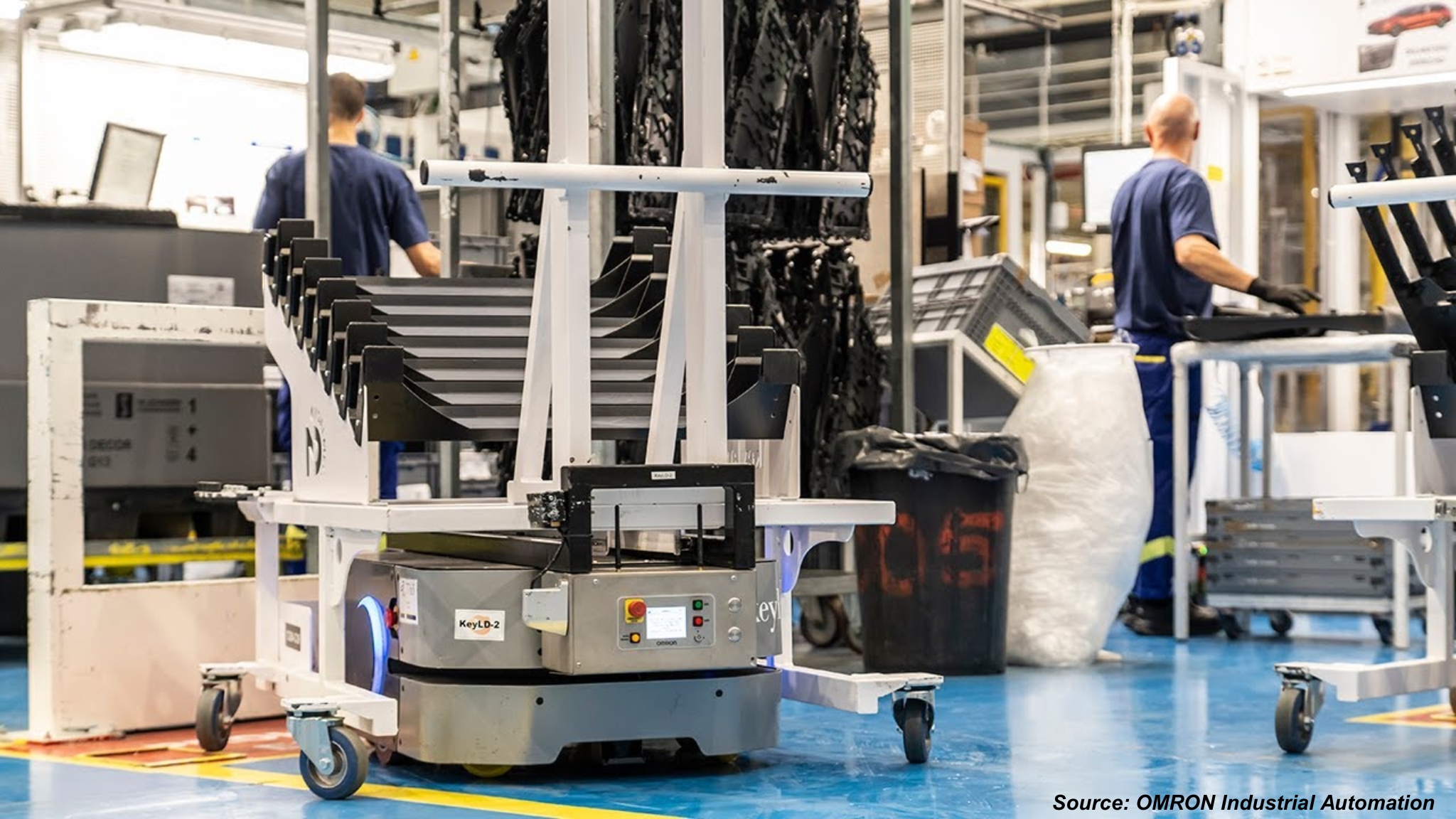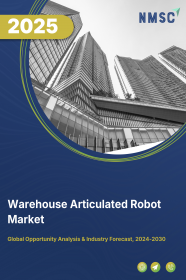
Warehouse Articulated Robot Market by type (4-Axis or Less, 5-Axis, 6-Axis, AGVs and others), by Payload ( Up to 16 Kg, 16 to 60 Kg, 60 to 225 Kg and More Than 225 Kg), by Component (Controller, Arm, End Effector, Drive, Sensor, and Others), by Application (Handling, Placing, Dispensing, Assembling, Processing, Transportation and Others), and by End-User – Global Opportunity Analysia and Industry Forecast 2024-2030
Market Definition
The Warehouse Articulated Robot Market size was valued at USD 6.03 billion in 2023 and is predicted to reach USD 17.38 billion by 2030 with a CAGR of 16.1% from 2024-2030.
A warehouse articulated robot is a type of robotic system specifically created for use in warehouses or distribution centres. These robots are built to execute a diverse array of tasks by flexing, rotating, and extending their joints, enabling them to access various positions and orientations. They accomplish various tasks by executing programmed instructions. Utilizing their multi-segmented arms, they extend, grasp, manipulate, and convey items within the warehouse setting. These robot finds widespread application across various industrial sectors where their ability to manipulate tools and equipment in challenging environments is invaluable.
Market Dynamics and Trends
The substantial growth of e-commerce worldwide is leading to a significant surge in the demand for automation and robotics which is boosting the market growth of warehouse articulated robots for tasks such as picking, sorting, and packaging.
According to recent report published by International Trade Administration, e-commerce industry is growing at a significant rate, with B2B e-commerce sector reaching USD 24.5 trillion in 2023 and it is anticipated to reach at USD 36.2 trillion by 2026. With such rise in the e-commerce sector, there is a growing need for automation solutions, including articulated robots, to optimize warehouse operations, increase efficiency, and meet the escalating demands of online retail fulfilment.
Moreover, regulatory compliance and safety standards play a crucial role in the adoption of articulated robots within warehouses. By minimizing accidents and errors, these robots help warehouses adhere to workplace safety regulations, reducing the risk of non-compliance. As a result, the demand for warehouse automation is on the rise, driving the adoption of warehouse articulated robots.
Furthermore, advancements in articulated robots technology is further boosting the growth of the market. For instance, in September 2021, Honeywell introduced its Smart Flexible Depalletizer, a cutting-edge robotic solution designed to automate pallet unloading processes in warehouses and distribution centres. Utilizing advanced machine learning and perception technologies, the depalletizer enhances operational efficiency, reduces labor shortages, and minimizes the risk of injuries associated with manual handling.
However, the high initial cost associated with articulated robot are expected to restrain the growth of the articulated robot market. On the contrary, the introduction of modern technologies such as artificial intelligence (AI) Integration, cloud connectivity, 3D sensors enable robots to operate autonomously, optimize processes, and navigate complex environments with precision, these innovations are anticipated to create ample growth opportunities for the articulated robot market in the coming years.
For instance, in October 2023, Hai Robotics Co., a manufacturer of Autonomous Case-handling Robots (ACRs), introduced the telescopic Grapple Hook ACR, along with the Hai Pick System 3. This innovation aims to increase storage density and performance with a smaller warehouse footprint.
Market Segmentations and Scope of the Study
The warehouse articulated robot market is segmented on the basis of type, payload, component, application, end-user and region. On the basis of type, the market is divided into, 4-Axis or Less, 5-Axis, 6-Axis, AGVs and others. Based on by Payload the market is segmented into Up to 16 Kg, 16 to 60 Kg, 60 to 225 Kg and More Than 225 Kg. On the basis of component, the market is segregated into Controller, Arm, End Effector, Drive, Sensor and Others. Based on application, the market is bifurcated into Handling, Placing, Dispensing, Assembling, Processing, Transportation and Others. Based on end- user, the market is segmented into E-commerce, Logistics and Distribution, Automotive, Electrical & Electronics, Chemicals, Rubbers & Plastics, Metal & Machinery, Food & Beverages, Pharmaceuticals & Cosmetics, and Others. regional breakdown and analysis of each of the aforesaid segments includes regions comprising of North America, Europe, Asia-Pacific, and Rest of The World (Row).
Geographical Analysis
Asia-Pacific region holds the dominating share in the warehouse articulated robot market during the forecast period due to the presence of major key players such as Beijing Geekplus Technology Co., Ltd. Quicktron Intelligent Technology Co., Ltd., and Yaskawa Electric Corporation and their product launch strategies plays a major role in the growth of the market in this region.
For instance, in January 2023, Beijing Geekplus Technology Co., Ltd. launched RoboShuttle Plus. This innovation aims toward a significant progress in the compatibility of Geek+'s robot models, advancing the path towards achieving full warehouse automation.
Moreover, the rapidly growing e-commerce sector in this region is further driving the demand for warehouse robotics to streamline numerous processes including product handling, packaging, and sorting in the warehouse and logistics centre, further boosting the growth of the market. According to the International Trade Administration, China is the largest e-commerce market globally as it reached USD 2.29 trillion in 2020-21 and is expected to reach USD 3.56 trillion by 2024-25.
On the other hand, North America is expected to witness a high rise in the warehouse articulated robot market. According to the latest report published by the Pharmaceutical Research and Manufacturers of America (PhRMA), the U.S. is one of the largest biopharmaceutical industries in the world, with the sector contributing about 1.6% of the country’s GDP in 2021. This flourishing industry necessitates advanced automation solutions including articulated robots to enhance warehouse efficiency, fueling the growth of the market across North America.
Moreover, the growing adoption of robotics in the automotive industry is fuelling the expansion of the warehouse articulated robot market in North America. According to the latest report from the International Federation of Robotics, the U.S. stands out as one of the leading countries adopting a large number of robots within its automotive sector, with a total of 1,457 robot operating in the automotive industry in 2023. This significant adoption is a driving the growth of the market.
Competitive Landscape
Various market players operating in the warehouse articulated robot market includes Daifuku Co., Ltd., KUKA AG, FANUC Corporation, Yaskawa Electric Corporation, ABB Group, Dematic Corporation, Swisslog Holding AG, Amazon Robotics LLC, KNAPP AG, Cimcorp Oy and others. These market players are adopting various strategies such as collaboration and product launches to remain dominant in the market.
For instance, in August 2022, Dematic Corporation partnered with Dexterity Inc. This partnership focuses on integrating full-task robotics to optimize flexibility within current workflows and effectively solve supply chain issues.
Moreover, in November 2023 Amazon Robotics launched Titan, its latest mobile robot innovation. This technology represents a leap forward in robotics, boasting robust capabilities tailored for heavy lifting tasks within the logistics sector and is positioned to transform the transportation of items by greatly improving safety measures and operational effectiveness.
Furthermore, In November 2023, Yaskawa launched the inaugural adaptive robot in its MOTOMAN NEXT series. This innovative series comprises five distinct models of next-generation robots, each tailored with varying payload capacities ranging from 4kg to 35kg. With a primary focus on autonomous adaptability and judgment capabilities, these robots are set to redefine the standards of automation.
Key Benefits
-
The report provides quantitative analysis and estimations of the warehouse articulated robot market from 2024 to 2030, which assists in identifying the prevailing market opportunities.
-
The study comprises a deep-dive analysis of warehouse articulated robot market including the current and future trends to depict prevalent investment pockets in the market.
-
Information related to key drivers, restraints, and opportunities and their impact on the warehouse articulated robot market is provided in the report.
-
Competitive analysis of the players, along with their market share is provided in the report.
-
SWOT analysis and Porters Five Forces model is elaborated in the study.
-
Value chain analysis in the market study provides a clear picture of roles of stakeholders.
Key Market Segments
By type
-
4-Axis or Less
-
5-Axis, 6-Axis
-
AGVs
-
Others
By Payload
-
Up to 16 Kg
-
16 to 60 Kg
-
60 to 225 Kg
-
More Than 225 Kg
By Component
-
Controller
-
Arm
-
End Effector
-
Drive
-
Sensor
-
Others
By Application
-
Handling
-
Placing
-
Dispensing
-
Assembling
-
Processing
-
Transportation
-
Others
By End-User
-
E-commerce
-
Logistics and Distribution
-
Automotive
-
Electrical & Electronics
-
Chemicals
-
Rubbers & Plastics
-
Metal & Machinery
-
Food & Beverages
-
Pharmaceuticals & Cosmetics
-
Others
By Region
-
North America
-
The U.S.
-
Canada
-
Mexico
-
-
Europe
-
The U.K.
-
Germany
-
France
-
Italy
-
Spain
-
Denmark
-
Netherlands
-
Finland
-
Sweden
-
Norway
-
Russia
-
Rest of Europe
-
-
Asia-Pacific
-
China
-
Japan
-
India
-
South Korea
-
Australia
-
Indonesia
-
Singapore
-
Taiwan
-
Thailand
-
Rest of Asia-Pacific
-
-
Rest of the World (RoW)
-
Latin America
-
Middle East
-
Africa
-
REPORT SCOPE AND SEGMENTATION:
|
Parameters |
Details |
|
Market Size in 2023 |
USD 6.03 billion |
|
Revenue Forecast in 2030 |
USD 17.38 billion |
|
Growth Rate |
CAGR of 16.1% 2024 to 2030 |
|
Analysis Period |
2023–2030 |
|
Base Year Considered |
2023 |
|
Forecast Period |
2024–2030 |
|
Market Size Estimation |
Billion (USD) |
|
Growth Factors |
|
|
Countries Covered |
28 |
|
Companies Profiled |
10 |
|
Market Share |
Available for 10 companies |
|
Customization Scope |
Free customization (equivalent to up to 80 working hours of analysts) after purchase. Addition or alteration to country, regional, and segment scope. |
|
Pricing and Purchase Options |
Avail customized purchase options to meet your exact research needs. |
KEY PLAYERS
-
Daifuku Co., Ltd.
-
KUKA AG
-
FANUC Corporation
-
Yaskawa Electric Corporation
-
ABB Group
-
Dematic Corporation
-
Swisslog Holding AG
-
Amazon Robotics LLC
-
KNAPP AG
-
Cimcorp Oy




















 Speak to Our Analyst
Speak to Our Analyst




